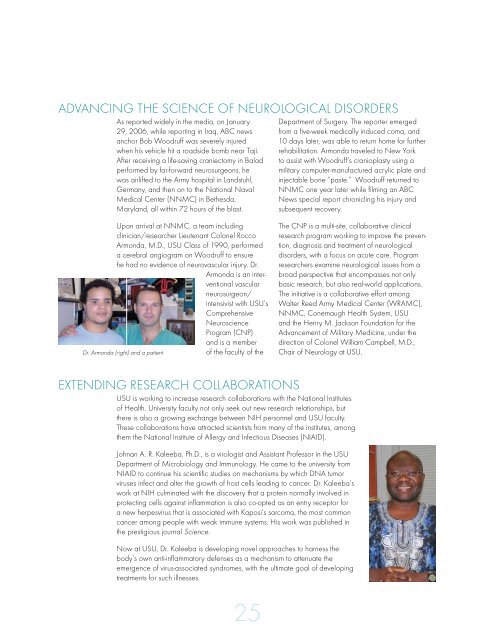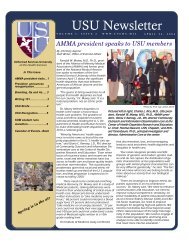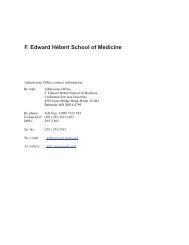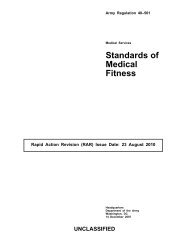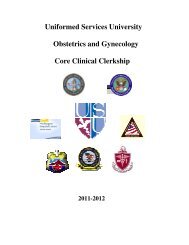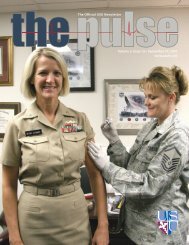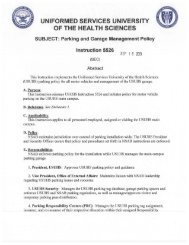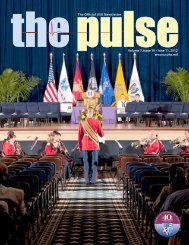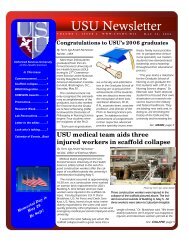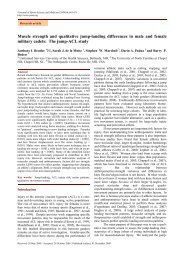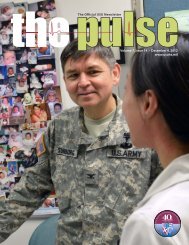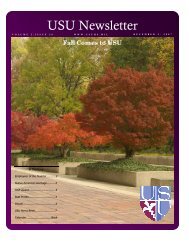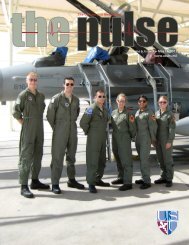Annual Report - Uniformed Services University of the Health Sciences
Annual Report - Uniformed Services University of the Health Sciences
Annual Report - Uniformed Services University of the Health Sciences
You also want an ePaper? Increase the reach of your titles
YUMPU automatically turns print PDFs into web optimized ePapers that Google loves.
ADVANCING THE SCIENCE OF NEUROLOGICAL DISORDERSAs reported widely in <strong>the</strong> media, on January29, 2006, while reporting in Iraq, ABC newsanchor Bob Woodruff was severely injuredwhen his vehicle hit a roadside bomb near Taji.After receiving a life-saving craniectomy in Baladperformed by far-forward neurosurgeons, hewas airlifted to <strong>the</strong> Army hospital in Landstuhl,Germany, and <strong>the</strong>n on to <strong>the</strong> National NavalMedical Center (NNMC) in Be<strong>the</strong>sda,Maryland, all within 72 hours <strong>of</strong> <strong>the</strong> blast.Department <strong>of</strong> Surgery. The reporter emergedfrom a five-week medically induced coma, and10 days later, was able to return home for fur<strong>the</strong>rrehabilitation. Armonda traveled to New Yorkto assist with Woodruff’s cranioplasty using amilitary computer-manufactured acrylic plate andinjectable bone “paste.” Woodruff returned toNNMC one year later while filming an ABCNews special report chronicling his injury andsubsequent recovery.Upon arrival at NNMC, a team includingclinician/researcher Lieutenant Colonel RoccoArmonda, M.D., USU Class <strong>of</strong> 1990, performeda cerebral angiogram on Woodruff to ensurehe had no evidence <strong>of</strong> neurovascular injury. Dr.Armonda is an interventionalvascularneurosurgeon/intensivist with USU’sComprehensiveNeuroscienceProgram (CNP)and is a memberDr. Armonda (right) and a patient<strong>of</strong> <strong>the</strong> faculty <strong>of</strong> <strong>the</strong>The CNP is a multi-site, collaborative clinicalresearch program working to improve <strong>the</strong> prevention,diagnosis and treatment <strong>of</strong> neurologicaldisorders, with a focus on acute care. Programresearchers examine neurological issues from abroad perspective that encompasses not onlybasic research, but also real-world applications.The initiative is a collaborative effort amongWalter Reed Army Medical Center (WRAMC),NNMC, Conemaugh <strong>Health</strong> System, USUand <strong>the</strong> Henry M. Jackson Foundation for <strong>the</strong>Advancement <strong>of</strong> Military Medicine, under <strong>the</strong>direction <strong>of</strong> Colonel William Campbell, M.D.,Chair <strong>of</strong> Neurology at USU.Extending Research CollaborationsUSU is working to increase research collaborations with <strong>the</strong> National Institutes<strong>of</strong> <strong>Health</strong>. <strong>University</strong> faculty not only seek out new research relationships, but<strong>the</strong>re is also a growing exchange between NIH personnel and USU faculty.These collaborations have attracted scientists from many <strong>of</strong> <strong>the</strong> institutes, among<strong>the</strong>m <strong>the</strong> National Institute <strong>of</strong> Allergy and Infectious Diseases (NIAID).Johnan A. R. Kaleeba, Ph.D., is a virologist and Assistant Pr<strong>of</strong>essor in <strong>the</strong> USUDepartment <strong>of</strong> Microbiology and Immunology. He came to <strong>the</strong> university fromNIAID to continue his scientific studies on mechanisms by which DNA tumorviruses infect and alter <strong>the</strong> growth <strong>of</strong> host cells leading to cancer. Dr. Kaleeba’swork at NIH culminated with <strong>the</strong> discovery that a protein normally involved inprotecting cells against inflammation is also co-opted as an entry receptor fora new herpesvirus that is associated with Kaposi’s sarcoma, <strong>the</strong> most commoncancer among people with weak immune systems. His work was published in<strong>the</strong> prestigious journal Science.Now at USU, Dr. Kaleeba is developing novel approaches to harness <strong>the</strong>body’s own anti-inflammatory defenses as a mechanism to attenuate <strong>the</strong>emergence <strong>of</strong> virus-associated syndromes, with <strong>the</strong> ultimate goal <strong>of</strong> developingtreatments for such illnesses.25


